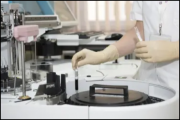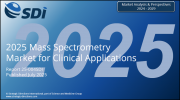
|
시장보고서
상품코드
1477519
세계의 질량 분석 시장(2023-2028년) : 시장 개요The Mass Spectrometry Market, 2023-2028: Market Briefs |
||||||
질량 분광계(MS)는 화합물을 분자에서 이온으로 변환하는 장치입니다. 이들 이온은 질량 전하 비율에 의해 분리되고, 결국 각 이온의 존재량이 측정됩니다.
본 보고서에서는 세계 질량 분석 시장에 대해 조사했으며, 시장 개요 모두 아래의 각 기술에 대해 정리했습니다.
목차
- 사중극 LC/MS
- GC-MS
- FT-MS와 이온 트랩 LC/MS
- 비행 시간형 LC/MS
- MALDI-TOF
- 자기 섹터 질량 분석
- 휴대용 질량 분석계와 인필드 질량 분석계
- 이온 이동성 분광계
A mass spectrometer (MS) is an instrument in which a chemical compound is converted from a molecule into ions. These ions are then separated according to their mass to charge ratio, and finally the abundance of each ion is measured.
This section includes the following technologies:
- Quadrupole LC/MS
- GC-MS
- FT-MS and Ion Trap LC/MS
- Time of Flight LC/MS
- MALDI-TOF
- Magnetic Sector Mass Spectrometry
- Portable and In-Field Mass Spectrometry
- Ion Mobility Spectrometry
Discussions on SIMS can be found in the surface science section, while ICP-MS can be found in the atomic spectroscopy section. It should be noted that this section excludes associated HPLC, GC, and other separation techniques that are commonly used in conjunction with mass spectrometry techniques. Related demand for these technologies is covered within the respective portions of the chromatography section.


















